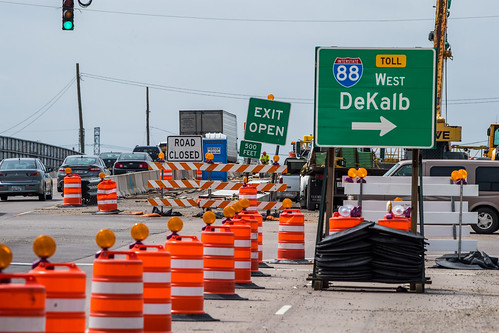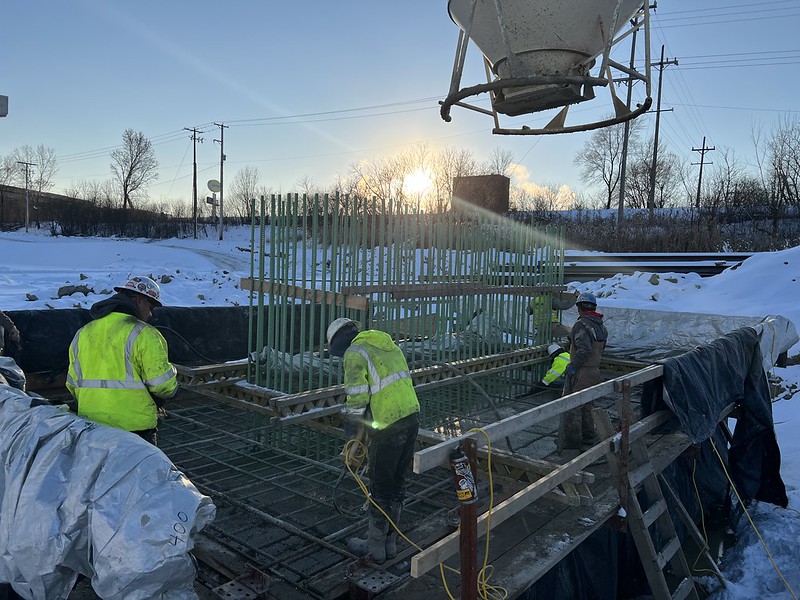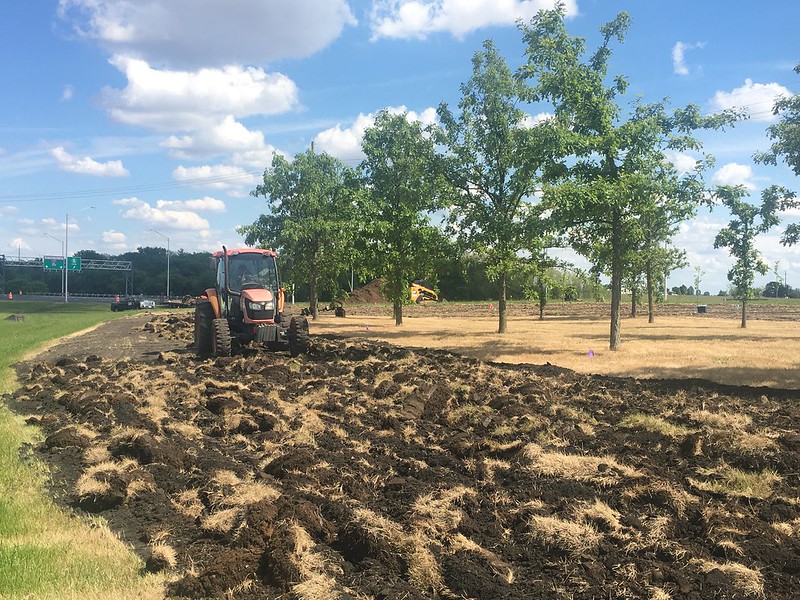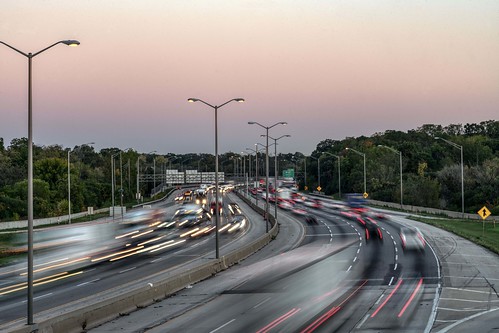Gallery
Images
The photographs available on this page are provided by the Illinois Tollway and are for editorial and promotional use only.
Please credit the Illinois Tollway.
The Illinois Tollway reserves the right to deny use of any photo, graphic or logo. These images may not be used for commercial purposes.
View and download files from the following categories:
April 18, 2022
You play a role in work zone safety. Work with us.
Videos
Public Service Announcements
Give Them Distance Public Service Announcement
Move Over Law
Effective January 1, 2017, Scott’s Law, also known as the “Move Over” law, was expanded to require passing drivers to slow down and change lanes safely when approaching ANY vehicle with its hazard lights on, not just emergency and maintenance vehicles.
Roadway Videos
Take a Ride on the Tollway's I-90 SmartRoad with Anthony Ponce
The Illinois Tollway’s new I-90 SmartRoad uses the latest technologies to make the roadway safer and more efficient for Illinois Tollway customers, incorporating active traffic management, integrating transit and delivering a 21st century corridor. Watch as former news anchor turned podcaster and ride share driver take a trip along I-90 using this new technology.
Illinois Route 390 Festival & Celebration Recap
On November 1, 2017, the Illinois Tollway opened the new Illinois Route 390 Tollway. To celebrate, the Tollway invited the public to participate in a family-friendly festival, 5K fun run and open bike ride in an event called, Trick, Trot and Roll. This video highlights the celebration and opening ceremonies for the newest addition to the Tollway’s system.
Illinois Route 390 - Realizing the Vision
Illinois Route 390 recently opened to the public on November 1, 2017. Hear from leadership throughout the region and in the communities talk about the importance of the project and the work still to come. #RealizingTheVision
Central Tri-State Tollway (I-294)
The 84-mile-long Tri-State Tollway (I-94/I-294/I-80) is the workhorse of the 294-mile Illinois Tollway system.
At the heart of the Tri-State Tollway is the Central Tri-State (I-294) from Balmoral Avenue to 95th Street. This 22-mile section carries some of the heaviest volume of passenger and freight traffic on the Tollway system, resulting in twice the amount of congestion delays when compared to the entire Tollway system. These congestion delays are estimated to cost drivers $330 million annually in time and fuel.
The Central Tri-State plays an integral role in the region’s economy, as the roadway is central to the region’s transportation network connecting two airports, thousands of businesses and hundreds of thousands of residents and workers.
Move Illinois Anniversary
2016 marked the fifth anniversary of the Move Illinois Program. Through Move Illinois, the Illinois Tollway is investing in new roads, bridges and interchanges to unlock opportunities for economic development in local communities and across the region and is creating and sustaining jobs for Illinois.
Illinois Route 390 Cashless Tolling Video
Cashless tolling is underway along the Illinois Route 390 Tollway from Lake Street to I-290.Cashless means no coin baskets or toll booths along the roadway - cash is not accepted. Drivers should use an I-PASS or pay online for tolls within seven days. This is the first, all-electronic roadway on the Illinois Tollway system, which provides for a safer, more efficient and seamless method of collecting tolls from customers.
2015 Move Illinois Progress
The fourth year of the Illinois Tollway's capital program, Move Illinois: The Illinois Tollway Driving the Future, was the largest year of capital spending in agency history. This video showcases the magnitude of work performed in 2015 and demonstrates the Tollway's commitment to its customers by delivering roadway improvements on time and within budget.
The video showcases construction of the new, all-electronic Illinois Route 390 as part of the Elgin O'Hare Western Access Project, including milestone achievements at the I-290 Interchange, in addition to progress on the 25-mile eastern segment of the Jane Addams Memorial Tollway (I-90) Rebuilding and Widening Project. The Tollway, in partnership with several state and local agencies and the transportation industry, is pleased to have made tremendous progress in 2015.
SmartRoad on Jane Addams Memorial Tollway (I-90)
What is SmartRoad?
Scheduled to go live on September 5, 2017, the new I-90 SmartRoad will be using the latest technologies to make the roadway safer and more efficient for Illinois Tollway customers, incorporating active traffic management, integrating transit and delivering a 21st century corridor.
Construction Videos
Elgin OHare Western Access (EOWA) Project Overview
The Elgin O'Hare Western Access (EOWA) Project has the potential to change the face of Illinois' northwest suburbs, the Midwest region and beyond.
Due to the overall magnitude of the project and potential to dramatically improve mobility, freight connectivity and enhance the national and regional economies, the EOWA Project is considered a Project of National and Regional Significance by the U.S. Department of Transportation.
I-290 Interchange Project Time-Lapse
As part of the Elgin O'Hare Western Access (EOWA) Project, the Illinois Tollway is completely rebuilding the I-290 Interchange at Illinois Route 390. Scheduled to be complete by the end of 2017, the I-290 Interchange Project will create direct access with free-flow traffic movements to and from Illinois Route 390 in all directions.
In 2014, work began to construct the first of two flyover ramps. The flyover ramp connecting westbound I-290 to Illinois Route 390 is scheduled to open to traffic in 2015. Construction of the second flyover ramp bridge connecting eastbound I-290 to eastbound Illinois Route 390 is scheduled to begin in 2015 and open to traffic in 2017.
Fox River Bridge Project Time-Lapse
The Fox River Bridge in Elgin was rebuilt and widened as part of the Jane Addams Memorial Tollway (I-90) Rebuilding and Widening Project. The $95 million Fox River Bridge Project began in 2014 and was completed in 2016, including construction of two new, wider bridge structures, drainage improvements and replacement of the existing bicycle and pedestrian path under the bridge. Currently, up to 101,300 vehicles travel on the I-90 Fox River Bridge daily.
Tri-Level Bridge Time-Lapse Construction
The ramp carrying traffic from eastbound I-190 to westbound I-90 and the ramp carrying traffic from northbound I-294 to westbound I-90 are now open.
Elmhurst Road Interchange Project at I-90 - Diverging Diamond Interchange Simulation
The Elmhurst Road Interchange on the Jane Addams Memorial Tollway (I-90) will be the first diverging diamond interchange constructed by the Illinois Tollway.
This video simulation shows how the design differs from conventional interchanges and demonstrates how the innovative interchange works.
The $54 million Elmhurst Interchange Project is scheduled for completion in 2016 and is part of the $3.4 billion Elgin O'Hare Western Access Project (EOWA), which is included in the Tollway's capital program, Move Illinois: The Illinois Tollway Moving the Future.
Take it Easy, Take the Tollway
This playlist features vintage videos created for the Illinois Tollway in 1959. This series used a character named Mary MacToll that urged customers to "Take it Easy, Take the Tollway."
Drop it and Drive
Distracted driving has become an epidemic in Illinois. From 2008 to 2012, nearly 6,000 crashes occurred in which some form of driver distraction involving a cellphone was cited by police. Thirty of them were fatal.
At any given time of day, about 800,000 people are using hand-held cellphones while driving, according to the National Highway Transportation Safety Administration. And, drivers using hand-held cellphones are four times more likely to get into a crash that causes injuries.







